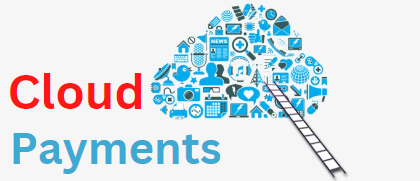How Cloud Payments Improve Transaction Speed and Efficiency
In today’s fast-paced digital world, businesses are constantly seeking ways to improve transaction speed and efficiency. One solution that has gained significant traction is cloud payments. Cloud payments refer to the process of conducting financial transactions through cloud-based platforms, eliminating the need for physical infrastructure and enabling businesses to streamline their payment processes.
This article will delve into the various aspects of cloud payments, including how they revolutionize transaction speed, enhance efficiency, and the role of cloud computing in streamlining payment processes.
How Cloud Payments Revolutionize Transaction Speed
One of the primary advantages of cloud payments is the significant improvement in transaction speed. Traditional payment methods, such as cash or checks, often involve time-consuming processes, including manual data entry and physical transportation. In contrast, cloud payments enable businesses to process transactions in real-time, reducing the time required for payment processing and increasing overall efficiency.
Cloud payment solutions leverage advanced technologies, such as artificial intelligence and machine learning, to automate payment processes. These technologies enable businesses to automate tasks like invoice generation, payment reconciliation, and fraud detection, resulting in faster transaction processing. For example, with cloud payments, businesses can automate the generation and delivery of invoices to customers, eliminating the need for manual intervention and reducing the time required to complete the payment cycle.
Furthermore, cloud payment platforms often integrate with various payment gateways and financial institutions, allowing businesses to accept a wide range of payment methods, including credit cards, digital wallets, and bank transfers. This versatility enables businesses to cater to diverse customer preferences and ensures faster payment processing by offering multiple options to customers.
Enhancing Efficiency through Cloud Payment Solutions
In addition to revolutionizing transaction speed, cloud payment solutions also enhance overall efficiency for businesses. By leveraging cloud-based platforms, businesses can streamline their payment processes, reducing manual errors and improving accuracy. Cloud payment platforms offer features like automated data entry, real-time reporting, and centralized payment management, enabling businesses to optimize their financial operations.
Automated data entry is a key feature of cloud payment solutions that eliminates the need for manual data entry, reducing the chances of errors and saving time. With cloud payments, businesses can integrate their payment platforms with their accounting systems, ensuring seamless data flow and eliminating the need for duplicate data entry. This automation not only improves efficiency but also reduces the risk of human errors that can lead to costly mistakes.
Real-time reporting is another crucial aspect of cloud payment solutions that enhances efficiency. Cloud payment platforms provide businesses with real-time access to transaction data, enabling them to monitor payment activities, track cash flow, and generate comprehensive reports. This real-time visibility into financial data empowers businesses to make informed decisions, identify potential bottlenecks, and optimize their payment processes for maximum efficiency.
Centralized payment management is yet another advantage offered by cloud payment solutions. With cloud payments, businesses can consolidate their payment operations into a single platform, eliminating the need for multiple systems and reducing complexity. This centralized approach enables businesses to manage payments from various channels, such as online sales, in-store transactions, and mobile payments, in a unified manner, streamlining operations and improving efficiency.
The Role of Cloud Computing in Streamlining Payment Processes
Cloud computing plays a pivotal role in streamlining payment processes and enabling the benefits of cloud payments. Cloud computing refers to the delivery of computing services, including storage, processing power, and software applications, over the internet. By leveraging cloud computing, businesses can access scalable and flexible resources, eliminating the need for on-premises infrastructure and reducing costs.
Cloud payment solutions leverage the power of cloud computing to provide businesses with a scalable and secure platform for processing payments. Cloud-based platforms can handle high volumes of transactions without compromising performance, ensuring that businesses can process payments efficiently even during peak periods. This scalability is particularly beneficial for businesses experiencing seasonal fluctuations in transaction volumes.
Furthermore, cloud computing enables businesses to access advanced technologies, such as artificial intelligence and machine learning, which are integral to cloud payment solutions. These technologies enable businesses to automate payment processes, detect fraudulent activities, and analyze payment data to gain valuable insights. By leveraging cloud computing, businesses can harness the power of these technologies without the need for significant upfront investments in hardware or software.
Exploring the Benefits of Cloud Payments for Businesses
Cloud payments offer numerous benefits for businesses, ranging from improved customer experience to cost savings. Let’s explore some of the key advantages that businesses can gain by adopting cloud payment solutions.
- Enhanced Customer Experience: Cloud payments enable businesses to offer a seamless and convenient payment experience to their customers. By accepting a wide range of payment methods and providing real-time transaction updates, businesses can cater to diverse customer preferences and ensure a smooth payment process. This enhanced customer experience can lead to increased customer satisfaction and loyalty.
- Cost Savings: Cloud payment solutions can significantly reduce costs for businesses. By eliminating the need for physical infrastructure, businesses can save on expenses related to hardware, maintenance, and upgrades. Additionally, cloud payment platforms often operate on a subscription-based model, allowing businesses to pay for the services they need without incurring upfront costs.
- Improved Cash Flow Management: Cloud payment solutions provide businesses with real-time visibility into their cash flow, enabling them to monitor incoming and outgoing payments. This visibility allows businesses to optimize their cash flow management, ensuring that they have sufficient funds to meet their financial obligations and make informed decisions regarding investments and expenses.
- Increased Security: Cloud payment platforms prioritize security and employ robust measures to protect sensitive payment data. These platforms often comply with industry standards and regulations, such as the Payment Card Industry Data Security Standard (PCI DSS), ensuring that businesses can securely process payments without compromising customer data.
- Scalability and Flexibility: Cloud payment solutions offer businesses the flexibility to scale their payment operations as their business grows. Whether it’s handling increased transaction volumes or expanding into new markets, cloud payment platforms can accommodate changing business needs without requiring significant infrastructure investments.
Overcoming Challenges: Security and Privacy in Cloud Payments
While cloud payments offer numerous benefits, businesses must address security and privacy concerns associated with storing and processing payment data in the cloud. Protecting sensitive customer information is of paramount importance to maintain trust and comply with data protection regulations. Here are some best practices for businesses to overcome security and privacy challenges in cloud payments:
- Choose a Trusted Cloud Payment Provider: Selecting a reputable and trusted cloud payment provider is crucial to ensure the security of payment data. Businesses should thoroughly evaluate the provider’s security measures, certifications, and compliance with industry standards.
- Implement Strong Authentication and Access Controls: Businesses should enforce strong authentication mechanisms, such as multi-factor authentication, to prevent unauthorized access to payment data. Additionally, access controls should be implemented to restrict access to payment systems and ensure that only authorized personnel can handle sensitive data.
- Encrypt Payment Data: Encrypting payment data both during transit and at rest is essential to protect it from unauthorized access. Encryption ensures that even if data is intercepted or compromised, it remains unreadable and unusable.
- Regularly Update and Patch Systems: Keeping payment systems and software up to date with the latest security patches is crucial to address vulnerabilities and protect against potential threats. Regularly monitoring and updating systems can help businesses stay ahead of emerging security risks.
- Conduct Regular Security Audits and Penetration Testing: Regular security audits and penetration testing can help identify vulnerabilities in payment systems and ensure that appropriate security measures are in place. These tests simulate real-world attack scenarios to assess the resilience of payment systems and identify areas for improvement.
Integrating Cloud Payments: Best Practices for Businesses
Integrating cloud payments into existing business processes requires careful planning and execution. Here are some best practices for businesses to ensure a smooth transition to cloud payment solutions:
- Assess Business Needs: Before implementing cloud payment solutions, businesses should assess their specific requirements and objectives. This assessment should consider factors such as transaction volumes, payment methods, and integration with existing systems. Understanding these needs will help businesses select the most suitable cloud payment solution.
- Choose a Scalable Solution: Businesses should select a cloud payment solution that can scale with their growth. Scalability is crucial to accommodate increasing transaction volumes and ensure that the payment platform can handle future demands without compromising performance.
- Integrate with Existing Systems: Seamless integration with existing systems, such as accounting software and customer relationship management (CRM) systems, is essential for efficient payment processing. Businesses should choose a cloud payment solution that offers robust integration capabilities and APIs to facilitate data flow between systems.
- Train Employees: Adequate training is crucial to ensure that employees understand how to use the cloud payment platform effectively. Training should cover topics such as payment processing, fraud detection, and customer support. Regular training sessions and updates should be conducted to keep employees up to date with the latest features and best practices.
- Monitor Performance and Optimize: Once cloud payment solutions are implemented, businesses should continuously monitor performance metrics and analyze data to identify areas for improvement. This data-driven approach enables businesses to optimize their payment processes, enhance efficiency, and deliver an exceptional customer experience.
Frequently Asked Questions (FAQs) about Cloud Payments
Q.1: What are cloud payments?
Cloud payments refer to the process of conducting financial transactions through cloud-based platforms, eliminating the need for physical infrastructure and enabling businesses to streamline their payment processes.
Q.2: How do cloud payments revolutionize transaction speed?
Cloud payments leverage advanced technologies, such as artificial intelligence and machine learning, to automate payment processes, resulting in faster transaction processing. Additionally, cloud payment platforms integrate with various payment gateways and financial institutions, allowing businesses to accept a wide range of payment methods, further enhancing transaction speed.
Q.3: What are the benefits of cloud payments for businesses?
Cloud payments offer numerous benefits for businesses, including enhanced customer experience, cost savings, improved cash flow management, increased security, and scalability and flexibility.
Q.4: How can businesses ensure the security and privacy of payment data in cloud payments?
Businesses can ensure the security and privacy of payment data in cloud payments by choosing a trusted cloud payment provider, implementing strong authentication and access controls, encrypting payment data, regularly updating and patching systems, and conducting regular security audits and penetration testing.
Q.5: What are some best practices for businesses to integrate cloud payments?
Some best practices for businesses to integrate cloud payments include assessing business needs, choosing a scalable solution, integrating with existing systems, training employees, and continuously monitoring performance and optimizing processes.
Conclusion
Cloud payments have emerged as a game-changer in the world of financial transactions, revolutionizing transaction speed and enhancing efficiency for businesses. By leveraging cloud-based platforms and advanced technologies, businesses can streamline their payment processes, automate tasks, and gain real-time visibility into financial data.
Cloud payments offer numerous benefits, including improved customer experience, cost savings, enhanced cash flow management, increased security, and scalability. However, businesses must address security and privacy concerns associated with cloud payments by implementing robust security measures and best practices. By adopting cloud payment solutions and following best practices, businesses can optimize their payment processes, improve efficiency, and deliver a seamless payment experience to their customers.











